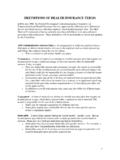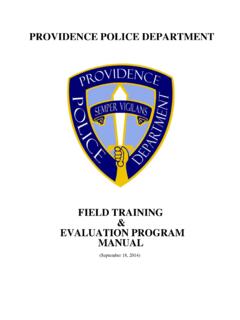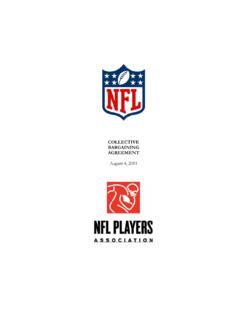Transcription of COVID-19 Vaccination and Testing ETS
1 EMERGENCY TEMPORARY STANDARD SUMMARY COVID-19 Vaccination and Testing ETS The Occupational Safety and Health Administration (OSHA) has issued an emergency temporary standard (ETS) to minimize the risk of COVID-19 transmission in the workplace. The ETS establishes binding requirements to protect unvaccinated employees of large employers (100 or more employees from the risk of contracting COVID-19 in the workplace. COVID-19 was not known to exist until January 2020, and since then nearly 745,000 people, many of them workers, have died from the disease in the alone.)
2 At the present time, workers are continually becoming seriously ill and dying as a result of occupational exposures to COVID-19 . OSHA expects that the Vaccination and Testing ETS will result in approximately 23 million individuals becoming vaccinated. The agency has conservatively estimated that the ETS will prevent over 6,500 deaths and over 250,000 hospitalizations. In issuing the ETS, OSHA has made several important determinations: Unvaccinated Workers Face Grave Danger: Unvaccinated workers are much more likely to contract and transmit COVID-19 in the workplace than vaccinated workers.
3 OSHA has determined that many employees in the who are not fully vaccinated against COVID-19 face grave danger from exposure to COVID-19 in the workplace. This finding of grave danger is based on the severe health consequences associated with exposure to the virus along with evidence demonstrating the transmissibility of the virus in the workplace and the prevalence of infections in employee populations. The evidence for the finding of a grave danger is in Section of the ETS preamble. An ETS is Necessary: Workers are becoming seriously ill and dying as a result of occupational exposures to COVID-19 , when a simple measure, Vaccination , can largely prevent those deaths and illnesses.
4 The ETS protects these workers through the most effective and efficient control available Vaccination and further protects workers who remain unvaccinated through required regular Testing , use of face coverings, and removal of all infected employees from the workplace. OSHA also concludes, based on its enforcement experience during the pandemic to date, that continued reliance on existing standards and regulations, the General Duty Clause of the OSH Act, and workplace guidance, in lieu of an ETS, is not adequate to protect unvaccinated employees from COVID-19 .
5 Thus, OSHA has also determined that an ETS is necessary to protect unvaccinated workers from the risk of contracting COVID-19 at work. The evidence for the need for the ETS is in Section of the ETS preamble. The ETS is Limited to Employers with 100 or More Employees: In light of the unique occupational safety and health dangers presented by COVID-19 , and against the backdrop of the uncertain economic environment of a pandemic, OSHA is proceeding in a stepwise fashion in addressing the emergency this rule covers. OSHA is confident that employers with 100 or more employees have the administrative capacity to implement the standard s requirements promptly, but is less confident that smaller employers can do so without undue disruption.
6 OSHA needs additional time to assess the capacity of smaller employers, and is seeking comment to help the agency make that determination. Nonetheless, the agency is acting to protect workers now in adopting a standard that will reach two-thirds of all private-sector workers in the nation, including those working in the largest facilities, where the most deadly outbreaks of COVID-19 can occur. Additional information on the scope of the ETS is found in Section of the ETS preamble. The ETS is Feasible: OSHA has evaluated the feasibility of this ETS and has determined that the requirements of the ETS are both economically and technologically feasible.
7 The evidence for feasibility is found in Section IV. of the ETS preamble. The specific 2 requirements of the ETS are outlined and described in the Summary and Explanation, which is in Section VI. of the ETS preamble. The ETS Preempts State and Local Laws: OSHA intends the ETS to address comprehensively the occupational safety and health issues of Vaccination , wearing face coverings, and Testing for COVID-19 . Thus, the standard is intended to preempt States, and political subdivisions of States, from adopting and enforcing workplace requirements relating to these issues, except under the authority of a Federally-approved State Plan.
8 In particular, OSHA intends to preempt any State or local requirements that ban or limit an employer from requiring Vaccination , face covering, or Testing . Additional information on the preemption of State and local laws is found in Section of the ETS preamble. The ETS Also Serves as a Proposed Rule: Although this ETS takes effect immediately, it also serves as a proposal under Section 6(b) of the OSH Act for a final standard. Accordingly, OSHA seeks comment on all aspects of this ETS and how it would be adopted as a final standard. OSHA encourages commenters to explain why they prefer or disfavor particular policy choices, and to include any relevant studies, experiences, anecdotes or other information that may help support the comment.
9 Stakeholders may submit comments and attachments, identified by Docket No. OSHA-2021-0007, electronically at Follow the instructions online for making electronic submissions. OSHA May Revise or Update the ETS: OSHA will continue to monitor trends in COVID-19 infections and death as more of the workforce and the general population become fully vaccinated against COVID-19 and as the pandemic continues to evolve. Where OSHA finds a grave danger from the virus no longer exists, or new information indicates a change in measures necessary to address the grave danger, OSHA may update this ETS, as appropriate.
10 This fact sheet highlights some of the additional requirements of the ETS; employers should consult the standard for full details. Read the full text of the ETS at: Understanding the ETS Employers covered by the ETS. The ETS generally applies to employers in all workplaces that are under OSHA s authority and jurisdiction, including industries as diverse as manufacturing, retail, delivery services, warehouses, meatpacking, agriculture, construction, logging, maritime, and healthcare. Within these industries, all employers that have a total of at least 100 employees firm- or corporate-wide, at any time the ETS is in effect, are covered.


















